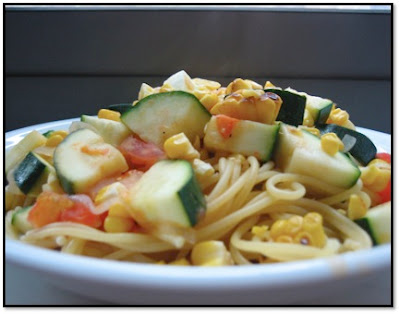At least once a year, I take on the challenge of making homemade pizza. Now, I'm not talking about a pre-made dough and some cheese. I'm talking- get some yeast, make the dough, use a pizza stone, go all out- homemade pizza. Making pizza from scratch is definitely an art that takes time and practice. But it's worth it. And every time I make it, I get a little bit better.
This year's agenda-whole wheat pizza. Whole wheat flour is a difficult to work with so I used half whole wheat flour and half all purpose flour to make the dough. You will find millions of recipes online and in cookbooks on how to make the perfect pizza. In my experience, it all depends on the yeast. This is the variable that determines all the other factors in your pizza, most importantly time. Making a dough from scratch could take you all day so be sure you know what type of yeast you are working with, how long it will take, and that you have a proper recipe to follow. Many traditional cookbooks will use cake yeast (live yeast) which is difficult to find and most likely not what you will be using. I used a rapid rise dry yeast because I had it in my baking cabinet. This dough recipe is based on using rapid rise yeast.
Homemade Whole Wheat Pizza
The Dough
1 cup whole wheat flour
1 cup all-purpose flour (+ more for dusting)
1 1/4oz. packet rapid rise yeast
1 Tsp. salt
1 cup of water
2 Tbsp. Olive Oil (Extra virgin is fine)
Sift the dry ingredients together in a bowl. Heat the water until it's body temperature or a bit hotter. Dry yeast needs warm water to be activated. If the water is too hot it will kill the yeast and if it's too cool it won't fully activate so the temperature is important. If you want to be sure, use a thermometer to verify your temperature. Add the oil to the water and mix the liquids into the dry ingredients. If necessary, add more flour to absorb any additional moisture. Take the dough out of the bowl and place it onto a floured surface for kneading. Knead for about 5 minutes until the dough is well mixed. Place the dough back in the bowl, cover with a towel and allow it to rise. Let it rise until it is about double in size (approximately 60 minutes) and then knead it once again to release air bubbles. Roll the dough out using a rolling pin to fit the size of your pizza stone or baking sheet. A baking sheet will need to be greased, a pizza stone will not.
If you want to make more than one pizza, cut the dough in half. I have a pretty large pizza stone so instead of making two or three small pizzas, I made one large pizza with three separate toppings. The toppings of choice- olive tapenade and ricotta; fresh mozzarella, tomato and basil; and finally tomato, fig and prosciutto.
My best friend had the fig and proscuitto in a pizza shop in a small town in Italy. It was so good she has been dreaming about it since she got back. It's definitely not a common find in the United States so I decided to give it a go. No doubt, the combination of salty prosciutto and sweet figs is perfection. Completely delicious. Even better, it's a perfect bite for those who can't handle cheese.
Toppings
2 Tomatoes, peeled and diced
Fresh Mozzarella
Fresh Basil (Do not used dried basil on pizza)
Olive tapenade
Part Skim Ricotta Cheese
Fresh Figs
Prosciutto
Fresh Tomato, Mozzarella, Basil
Place the tomatoes and their released juices onto 1/3 pie. Place mozzarella and shredded basil on top of of the fresh tomatoes. Salt and pepper to taste.
Fig and Prosciutto
Clean the figs and cut them into smaller pieces. Spread the remaining fresh tomatoes and their juices over the next 1/3 of the pie. Top with figs and pieces of prosciutto. The prosciutto adds plenty of salt so only add additional pepper to taste.
Olive Tapenade and Ricotta
Spread the Olive tapenade over the remaining 1/3 of the pizza using a thick enough coating that the crust underneath is no longer visible. Place spoonfuls of ricotta on top. Salt and pepper to taste.
To bake pizza in a conventional oven, set the temperature as high as it will go. My oven made it to 500 degrees. The pizza and toppings will take any where from 10 to 20 minutes depending on thickness, ingredients etc so just keep an eye on it. When the dough is crispy and brown and the cheese is melted and sizzling- it's done! Serve and enjoy!
Not only am I slowly perfecting my art of pizza making, but it just keeps getting healthier and healthier!
What makes this bite better?
A wheat grain is made up of three parts-the bran, the germ and the endosperm. Whole wheat flour is made using all three parts of the grain. Therefore, it has much more fiber and minerals than processed white flour. White flour is only made from the endosperm, which is the starchy component of the grain. The bran and germ are stripped away when white flour is made, causing a great lose in nutrient content and fiber. This recipe is composed of 50% whole wheat flour providing the nutritional benefits of the wheat flour but preventing the pizza from tasting like cardboard. In addition, the fiber will make you fuller faster so you will eat less. That's worth a pizza party!






















